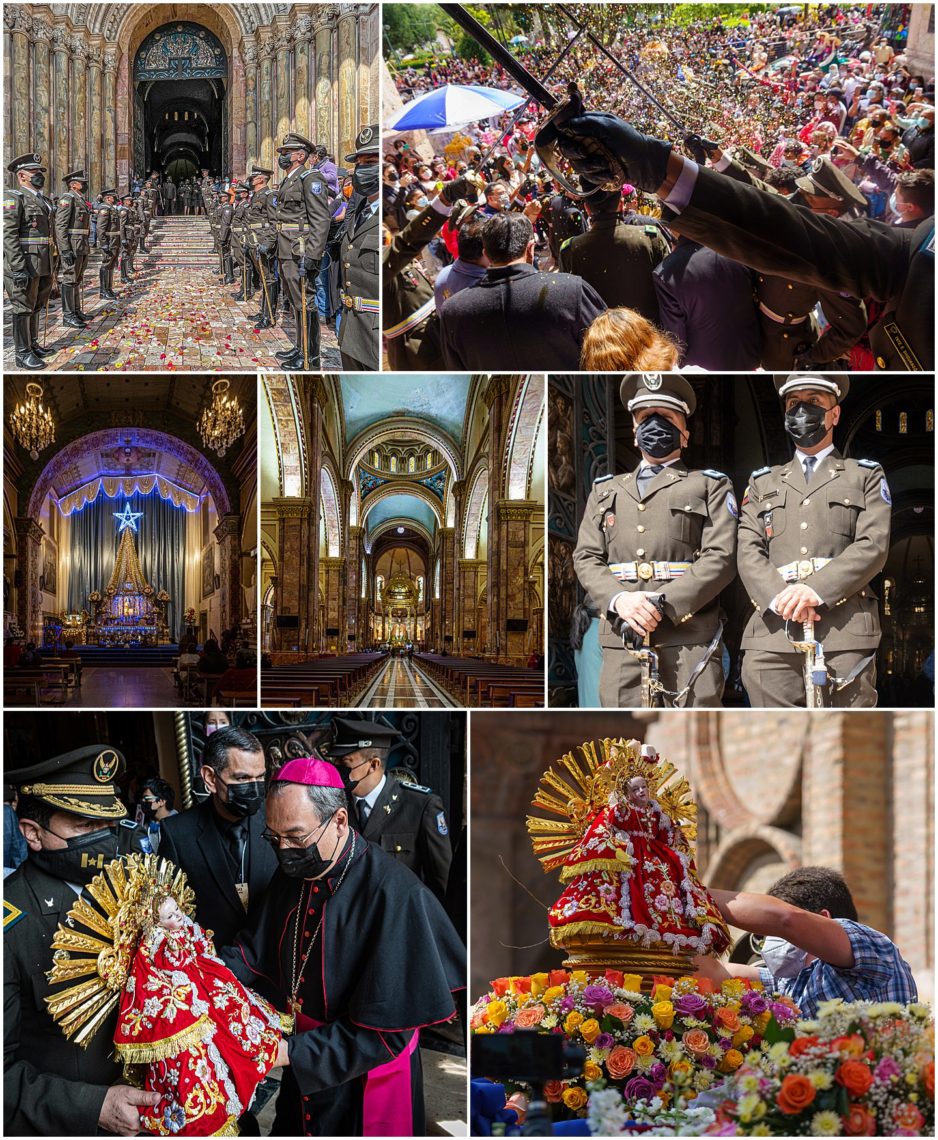
This year’s parade was like no other before it… and yet it was exactly the same. Read on to see why…
In 1823, the Vicar of the Archdiocese of Cuenca took a doll of the baby Jesus to various Holy sites around the world. The pope blessed the doll when it went to Rome. This doll was returned to Cuenca in 1961, where it was proclaimed that “The traveling Child has returned!” That was the first year that a parade was held in Cuenca on Christmas Eve, in celebration of the return of the Baby Jesus statue.
The parade has occurred every Christmas Eve since that year, with the exception of 2020, due to COVID. Even that year a celebration was held though, as the Archbishop flew in a helicopter over the city with the doll, blessing all the neighborhoods of Cuenca.
Our first experience with this parade was in 2012, when it was estimated that there were 800 floats and 60,000 participants! That number continues to grow every year, and was estimated to include 70,000 participants in 2019. This was easily the largest Christmas parade in all of South America.
This year’s Pase del Niño parade was mired in confusion from the start. In November, the government stated that the parade would proceed normally this year. Then, on December 19, just 5 days before the parade, the government changed their mind and said that the Cuenca parade was being cancelled, and could not proceed at all. The response by nearly everyone was shock and outrage. The official government position was that the Catholic Church had not applied for the necessary permits by December 14 (an arbitrary and after-the-fact date they came up with).
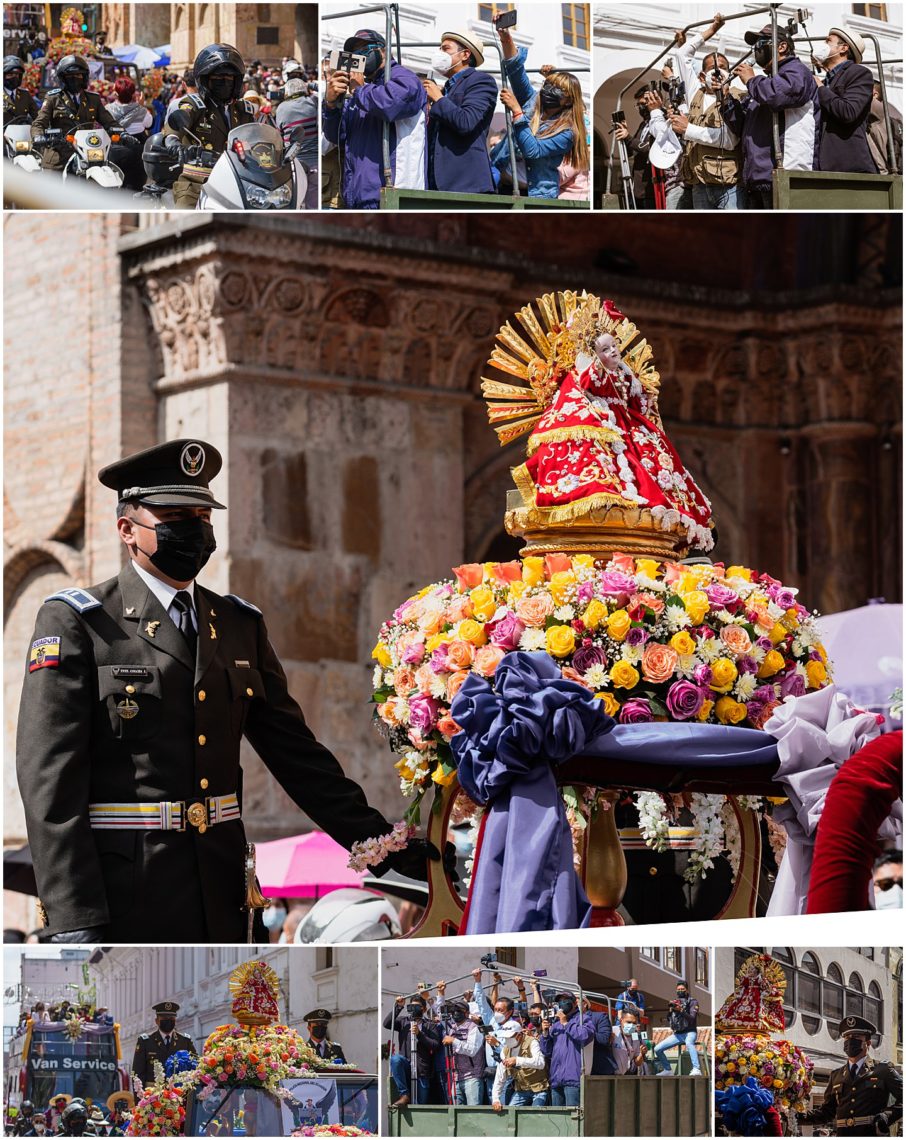
The parades in other cities, such as Gualaceo and Paute, were allowed to proceed normally, apparently for no reason other than their church officials had applied for their parade permits early enough. Those parades are normally much smaller than Cuenca. I have not read any official results from those parades, but I expect that many of the groups who had planned to march in the Cuenca parade went to those nearby cities instead.
On the very next day, the government changed its mind about Cuenca, and said the parade could continue, but only with motorized floats. No marching or dancing would be allowed. Further, all onlookers must maintain “social distancing” of 6 feet between people, and that people should watch from balconies, rather than on the street. That only brought the complaints from a deafening roar down to a shouting match.
At the last moment, the route also changed to start at San Sebastian Plaza and go along Calle Mariscal Lamar and finish at Parque Calderon. The entire parade was completed in 1 hour this year vs the 7 hours it has taken in past years.
After mass at the New Cathedral, the Traveling Child statue was placed onto a military transport (center), and the parade began at around 10:00 AM. A truck led the Niño Viajero sculpture, overflowing with journalists vying for position to document the procession (top-center, top-right, bottom-center) along Av. Simón Bolivar. A double decker bus, normally used for tourists around Cuenca, followed the statue, filled with various Cuenca dignitaries (bottom-left), including Cuenca’s mayor.
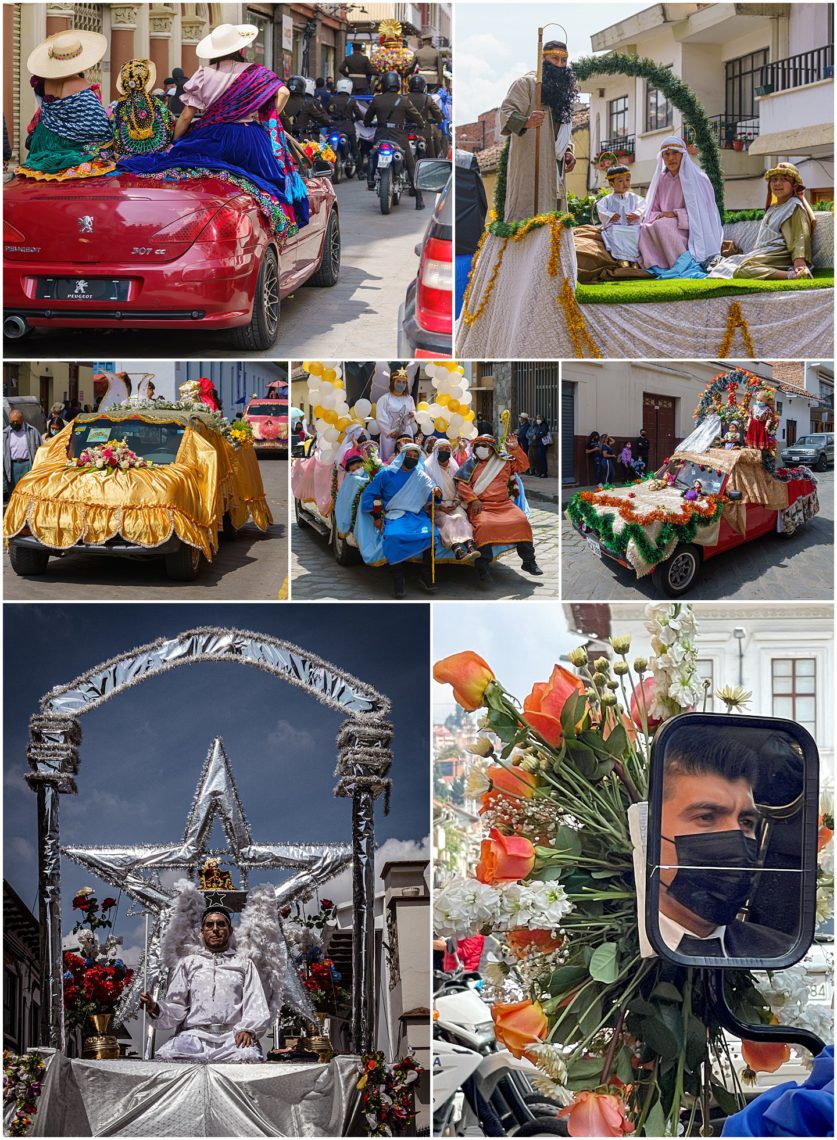
After four blocks with only those three vehicles, other motorized floats were permitted to join the procession at Calle Mariscal Sucre and Colonel Talbot, and this started to take on more of the flavor of an actual parade, albeit solely motorized.
As you will see below, the government rules were ignored by many groups, but the result was that this year the parade was vastly smaller than in all prior years that we have attended. The upside for us was that we were able to get much closer to the action than before, and did not have to fight the non-existent crowds.
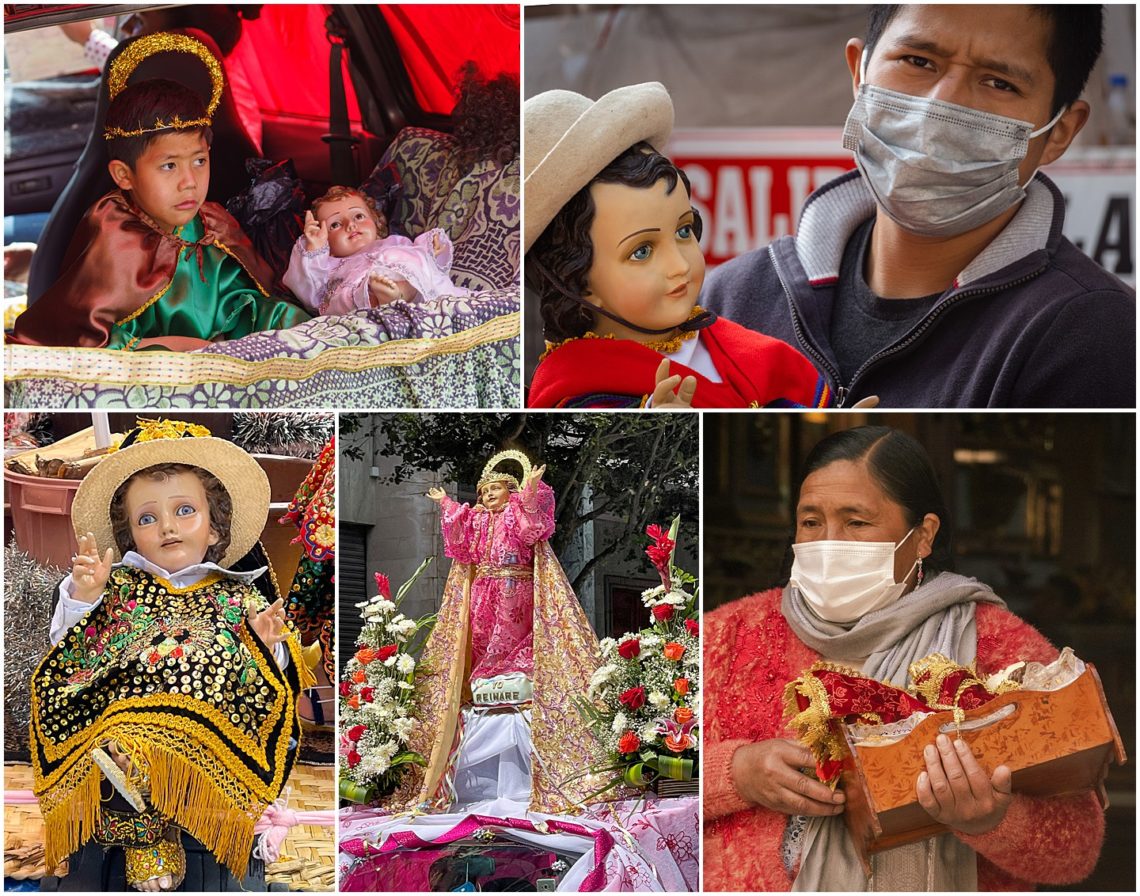
As has been seen in prior years, many of the parade participants had their own Baby Jesus dolls that they carried in the parade. There were several people walking alongside the official military escort, while others were on the motorized floats.
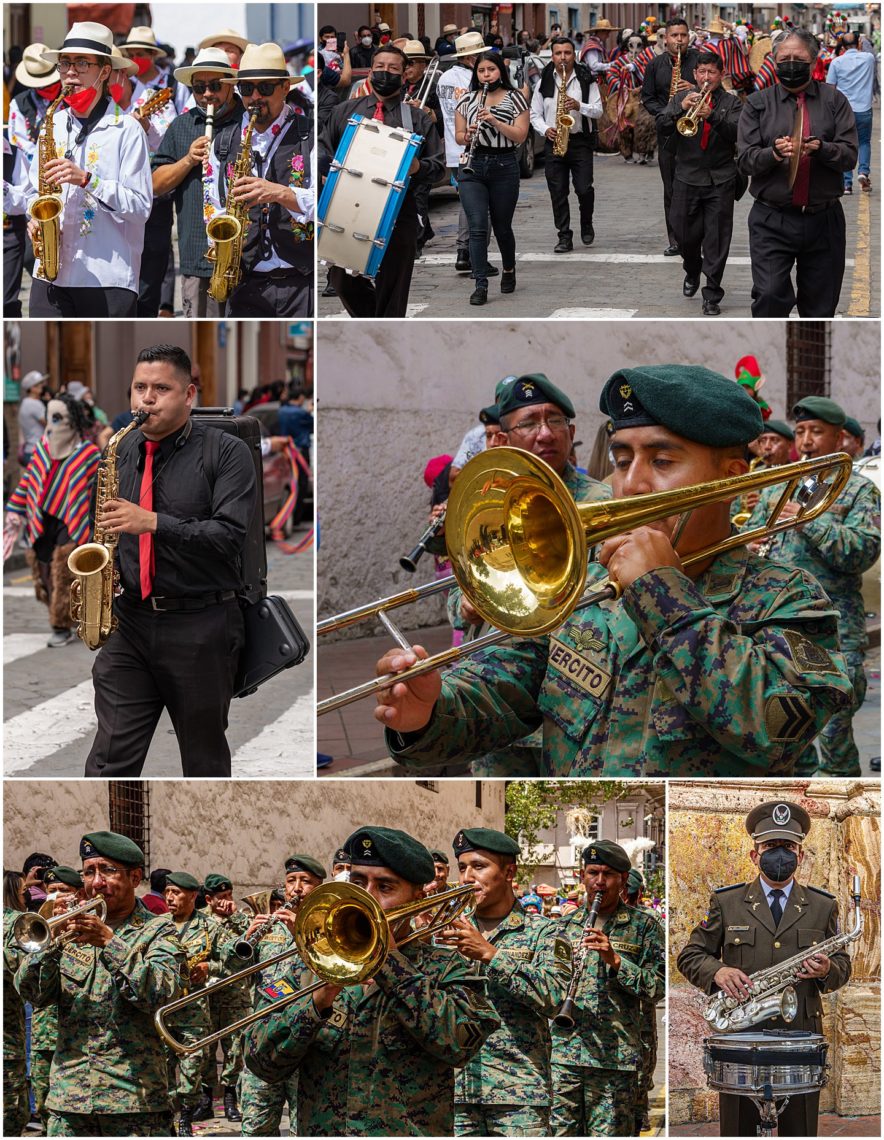
Then the surprise followed. Just the day before, it had been declared that ONLY motorized floats would be allowed in the parade. Yet, after 23 floats has passed (compared to the 700 floats of prior years), a marching band joined the procession. I never heard any official announcement that participants would be allowed on foot, but the multiple marching bands, one of which was a military band (lower-left and center-right), indicates that word reached some people that the Ecuadorian government had changed the rules yet again at the last minute.
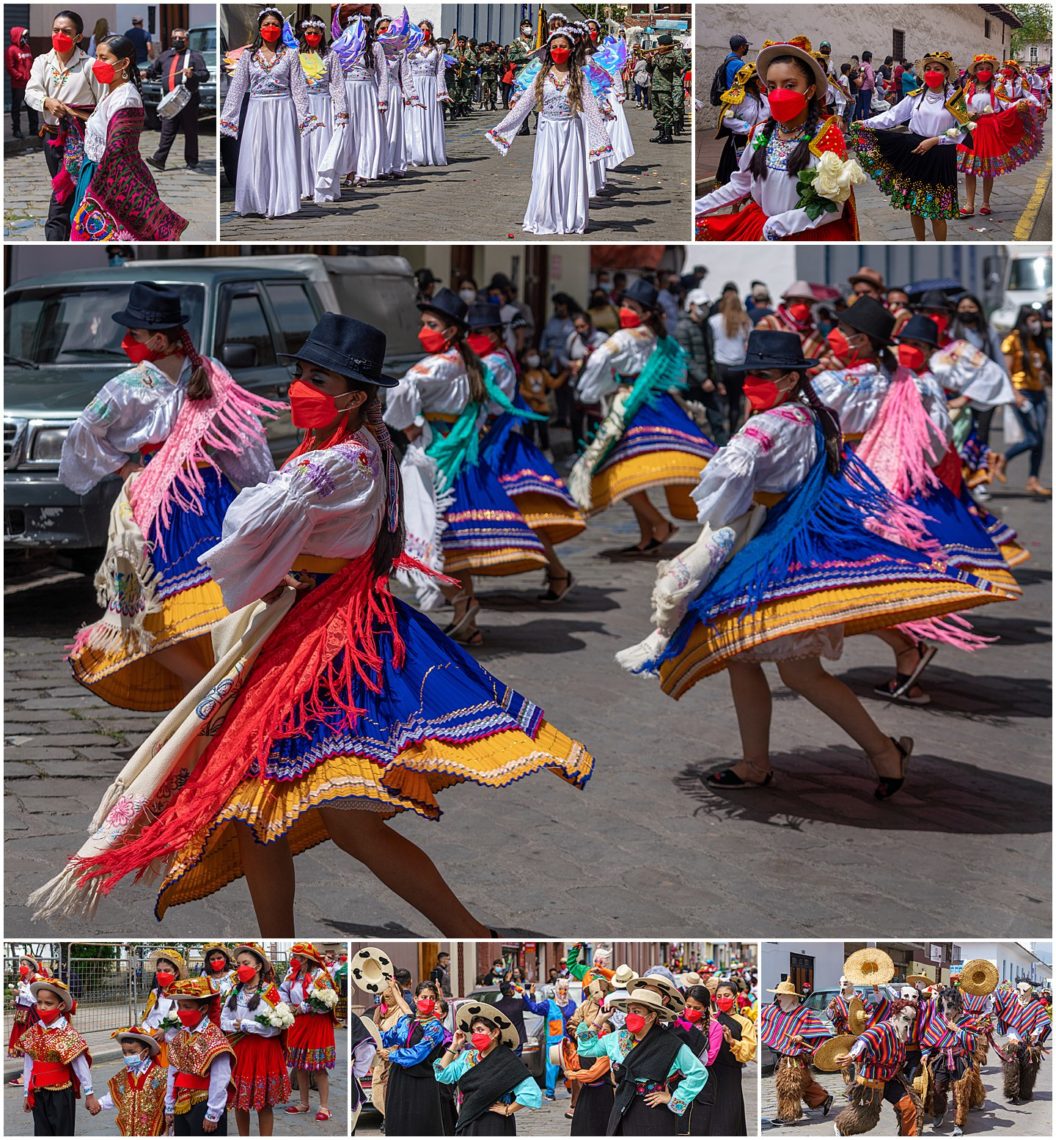
Sure enough, following the bands were groups of dancers, and others in traditional indigenous costumes. Just like any prior year, though with far fewer participants. Official estimates indicate there were approximately 1,500 people in the procession this year, vs the 70,000 estimated in 2019.
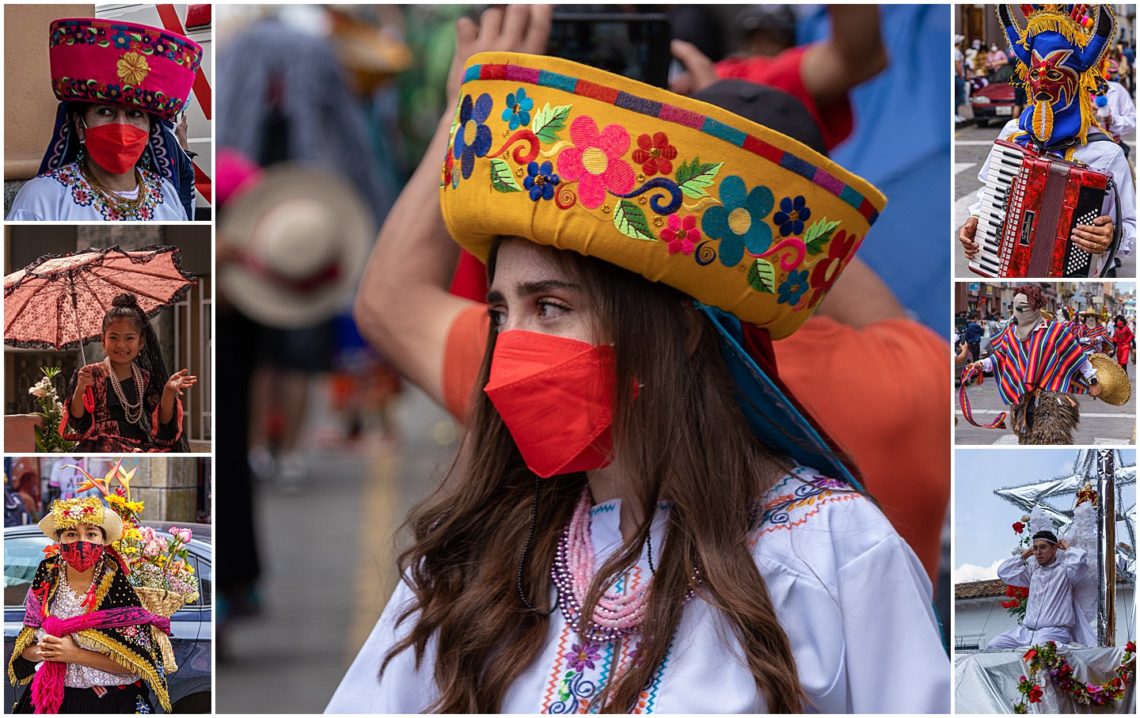
Those who did join the procession dressed in the same costumes with the same level of detail as in all the prior Christmas parades that we have seen.
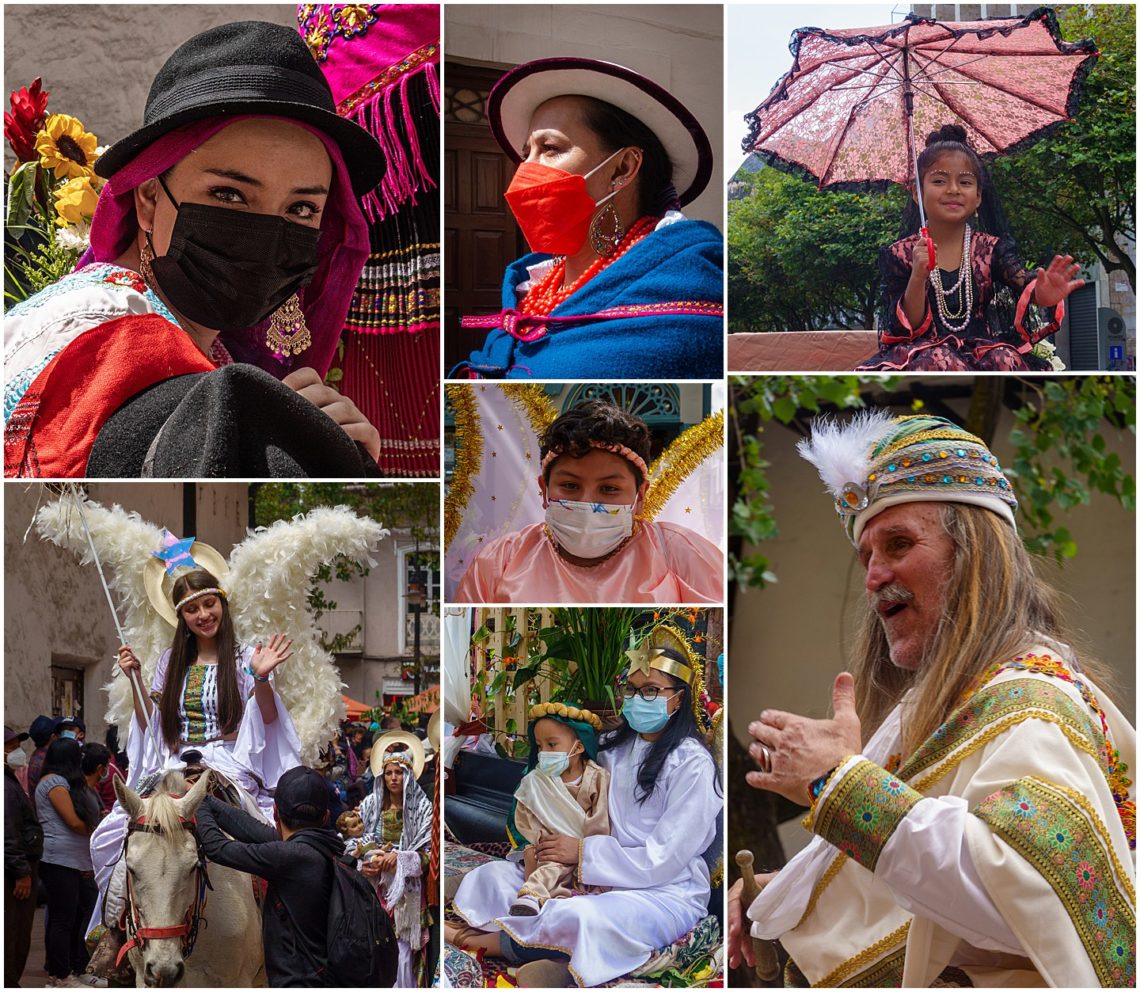
Past years included hundreds of horses, most with small children riding with elaborate costumes. This year there were only three adults on horseback, including expat Peter Dudar (lower-right). Some of the children that you normally see riding on horseback were instead riding on decorated pickup trucks.
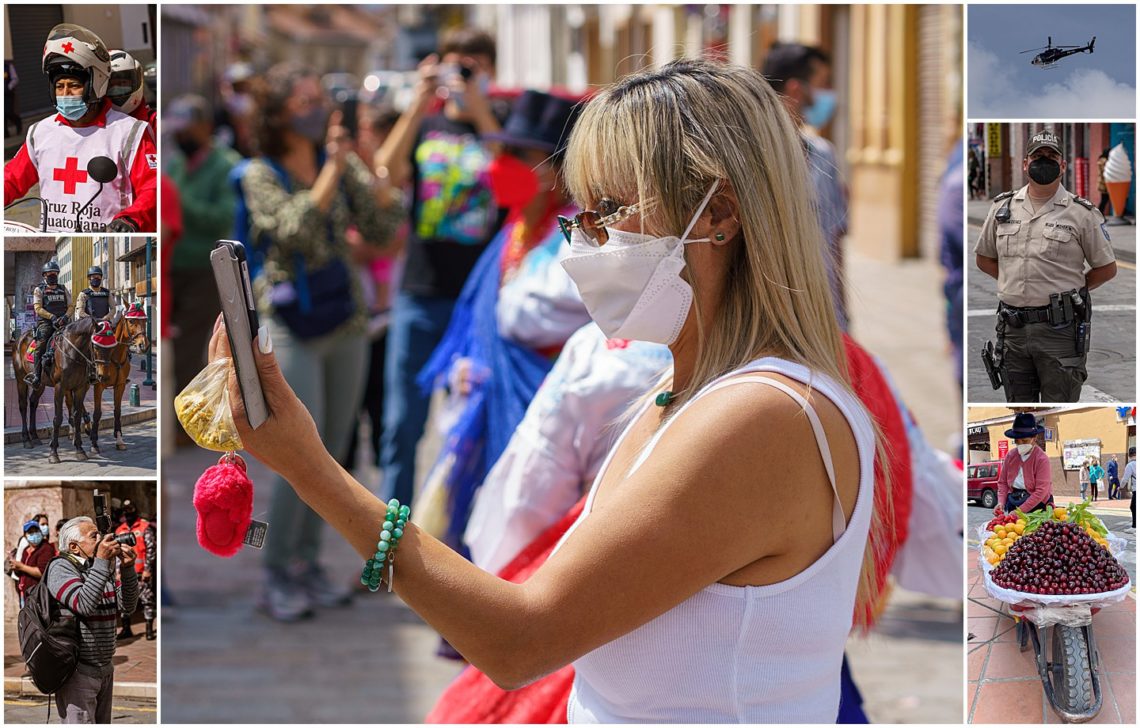
With over 50,000 people in the audience in past years, it was very difficult to get near the action on the street. The audience was extremely sparse this year with an estimated 15,000 viewers. Many sections of the short parade route were no more crowded than a normal shopping day. In fact, Evelyn was able to stand next to the Archbishop carrying the Niño Viajero doll and photograph as the glitter canon was shot.
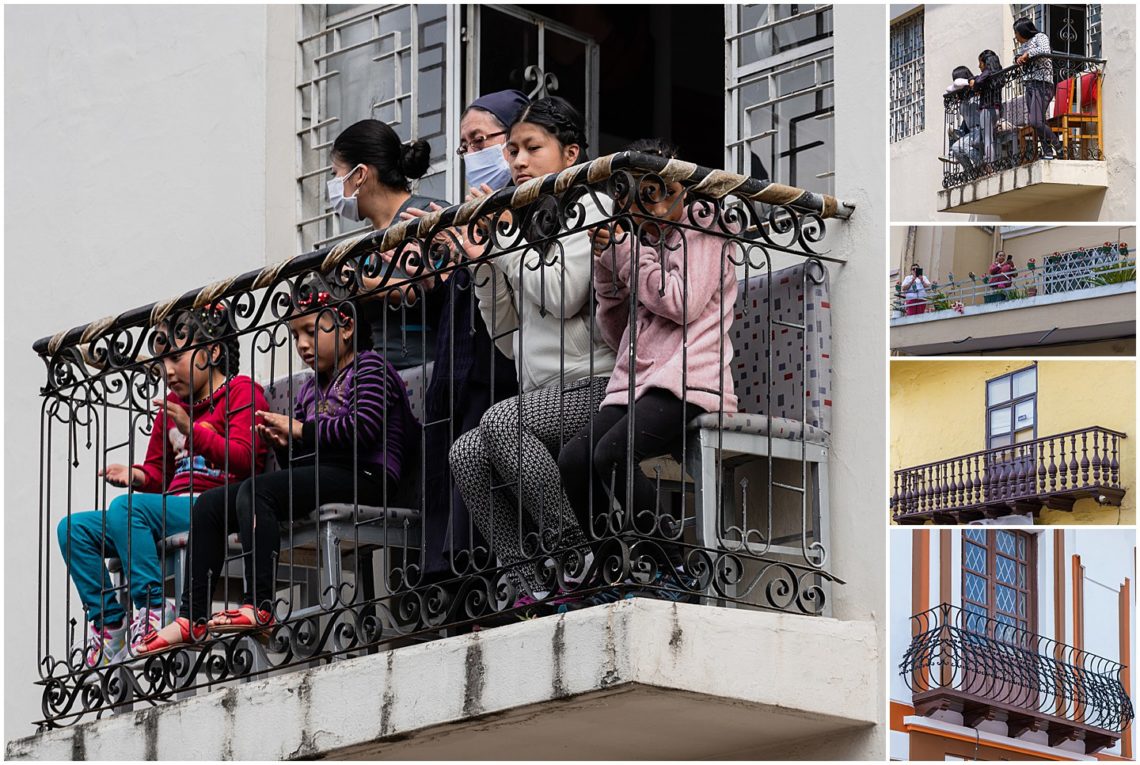
Cuenca and Ecuadorian officials had told people they should watch the parade from balconies, to avoid crowds this year. Though there were a few people here and there watching from balconies, I estimate that 90% of the balconies along the route were totally empty of people (lower-right).
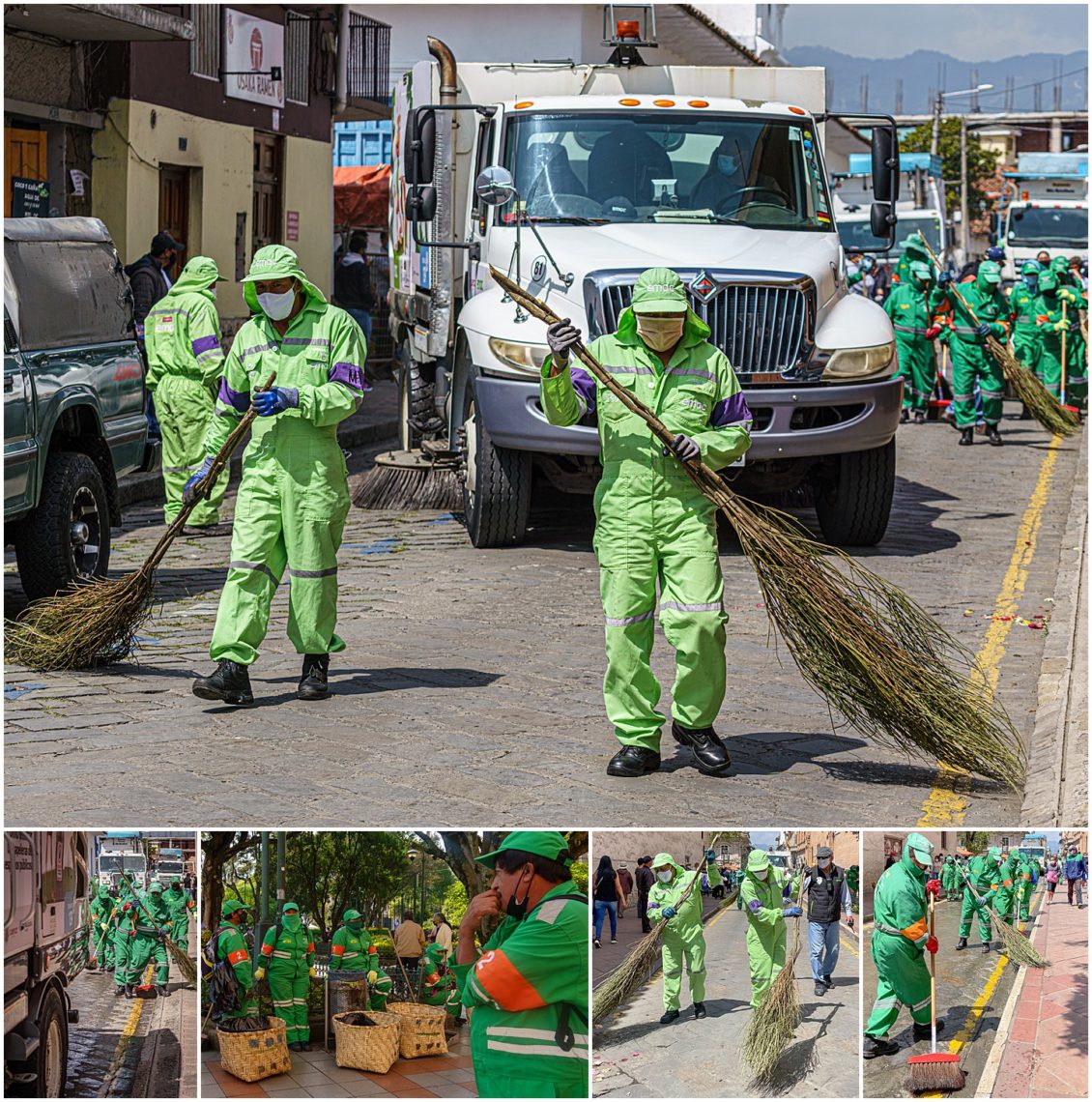
One of the unsung miracles of Cuenca is how clean it is. This is largely due to what I have taken to calling “The Cuenca Green Army.” This is a crew of people that start cleaning our streets every morning at 5AM. They also come out for every parade, following half a block behind the last parade participant. Within minutes of a parade passing, of any size, there is no litter, no horse excrement, no indication that it was anything other than a normal day in the city.
Here is a short video of some of the segments from the 2021 parade in Cuenca.